Red-capped Lark
Posted: Sat Mar 15, 2014 6:16 pm
507. Red-capped Lark Calandrella cinerea (Rooikoplewerik)
Order: Passeriformes. Family: Alaudidae
Description
Size 14-15 cm. It has a typically upright stance. It is a long-winged, slender lark with a short, blackish beak and plain white underparts.
Upperpart coloration is very variable (streaked grey to brown) but the bright rufous cap, unmarked, white underpart and russet smudges on the sides of the breast are diagnostic.
Adult: Crown rufous, with fairly short, erectile hind-crown crest. Lores white, merging with whitish supercilium; narrow black eye stripe extends above ear coverts behind eye. Ear coverts whitish, finely streaked brown, darkest towards rear. Nape and hind neck sandy brown to mid-brown (pale grey-brown in some areas); sides of neck brown, with whitish streaks. Mantle sandy brown to mid-brown, finely streaked darker brown; back similar, but more heavily marked. Rump reddish brown, upper tail coverts rufous. Tail dark brown, outer pair of rectrices with white outer webs, next pair with narrow whitish outer edge, central pair with buffy margins. Flight feathers dark brown, outer primary with buffy-white outer web, remainder with narrow, paler brown outer edges. Scapulars, greater and median upper wing coverts and elongated tertials brown, with rufous-buff margins; lesser upper wing coverts sandy brown, with darker centres. Underwing coverts and axillaries pale brown. Foreneck brown, with whitish streaks. Remainder of underparts white, sides of breast with prominent rufous patches, sometimes almost meeting in centre; flanks with variable amount of brown or rufous. Bill black; small, fairly slender. Eyes brown. Legs and feet dark brown to black.
Male is redder than female and has a longer crest. Epaulettes (shoulder patches) on the sides of the breast are normally larger and more prominent in the male.
Juvenile has dark brown upperparts, spotted with white, and is pale below with a heavily spotted breast; it lacks the red cap and epaulettes of the adult.
Distribution
From southern DRC and Kenya through Zambia and Angola to southern Africa. Probably the most widespread lark species. Its range extends across most of South Africa, with the exception of the northern parts of KwaZulu-Natal.
C. c. saturatior: Uganda and w Kenya s to Angola, ne Namibia, n Botswana and Zambia
C. c. spleniata: wc Angola to wc Namibia
C. c. cinerea: s, c Namibia, s Botswana, Zimbabwe and s Africa
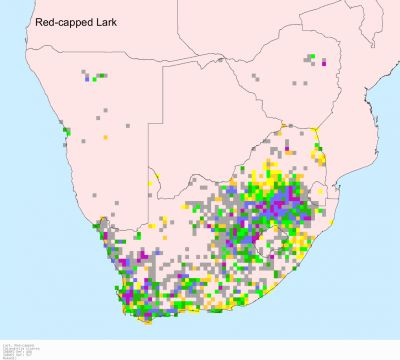
Habitat
Open country with very short grass cover.
Diet
The red-capped Larks feeds mainly on seeds and insects in very short grass or on patches of bare ground. It eats termites, grasshoppers, wasps, snails and ants. Also takes seeds and grasses.
Breeding
Sometimes 2 to 4 pairs will nest as close as 25 m apart. The nest is built mainly by the female in about 4-5 days, it is a deep open, cup, which is set into the ground, and is usually situated close to a grass tuft, stone or mound. The nest is lined with fine grass and rootlets. The eggs are usually laid just before rainfall in the period from March-December, peaking from July-September. It lays 2-4 eggs, which are incubated solely by the female for about 12-15 days, while the male feeds her at the nest. The chicks are fed by both parents, leaving the nest after about 9-18 days.
Call
The call of the Red-capped Lark is a sparrow-like tchweerp, given in flight; song a sustained jumble of melodious phrases treee, treee, tip-tip, tippy, tippy tippy, given display flight. It also imitates other birds. Listen to Bird Call.
Status
Common resident. In dry season often found in flocks.
Order: Passeriformes. Family: Alaudidae
Description
Size 14-15 cm. It has a typically upright stance. It is a long-winged, slender lark with a short, blackish beak and plain white underparts.
Upperpart coloration is very variable (streaked grey to brown) but the bright rufous cap, unmarked, white underpart and russet smudges on the sides of the breast are diagnostic.
Adult: Crown rufous, with fairly short, erectile hind-crown crest. Lores white, merging with whitish supercilium; narrow black eye stripe extends above ear coverts behind eye. Ear coverts whitish, finely streaked brown, darkest towards rear. Nape and hind neck sandy brown to mid-brown (pale grey-brown in some areas); sides of neck brown, with whitish streaks. Mantle sandy brown to mid-brown, finely streaked darker brown; back similar, but more heavily marked. Rump reddish brown, upper tail coverts rufous. Tail dark brown, outer pair of rectrices with white outer webs, next pair with narrow whitish outer edge, central pair with buffy margins. Flight feathers dark brown, outer primary with buffy-white outer web, remainder with narrow, paler brown outer edges. Scapulars, greater and median upper wing coverts and elongated tertials brown, with rufous-buff margins; lesser upper wing coverts sandy brown, with darker centres. Underwing coverts and axillaries pale brown. Foreneck brown, with whitish streaks. Remainder of underparts white, sides of breast with prominent rufous patches, sometimes almost meeting in centre; flanks with variable amount of brown or rufous. Bill black; small, fairly slender. Eyes brown. Legs and feet dark brown to black.
Male is redder than female and has a longer crest. Epaulettes (shoulder patches) on the sides of the breast are normally larger and more prominent in the male.
Juvenile has dark brown upperparts, spotted with white, and is pale below with a heavily spotted breast; it lacks the red cap and epaulettes of the adult.
Distribution
From southern DRC and Kenya through Zambia and Angola to southern Africa. Probably the most widespread lark species. Its range extends across most of South Africa, with the exception of the northern parts of KwaZulu-Natal.
C. c. saturatior: Uganda and w Kenya s to Angola, ne Namibia, n Botswana and Zambia
C. c. spleniata: wc Angola to wc Namibia
C. c. cinerea: s, c Namibia, s Botswana, Zimbabwe and s Africa

Habitat
Open country with very short grass cover.
Diet
The red-capped Larks feeds mainly on seeds and insects in very short grass or on patches of bare ground. It eats termites, grasshoppers, wasps, snails and ants. Also takes seeds and grasses.
Breeding
Sometimes 2 to 4 pairs will nest as close as 25 m apart. The nest is built mainly by the female in about 4-5 days, it is a deep open, cup, which is set into the ground, and is usually situated close to a grass tuft, stone or mound. The nest is lined with fine grass and rootlets. The eggs are usually laid just before rainfall in the period from March-December, peaking from July-September. It lays 2-4 eggs, which are incubated solely by the female for about 12-15 days, while the male feeds her at the nest. The chicks are fed by both parents, leaving the nest after about 9-18 days.
Call
The call of the Red-capped Lark is a sparrow-like tchweerp, given in flight; song a sustained jumble of melodious phrases treee, treee, tip-tip, tippy, tippy tippy, given display flight. It also imitates other birds. Listen to Bird Call.
Status
Common resident. In dry season often found in flocks.
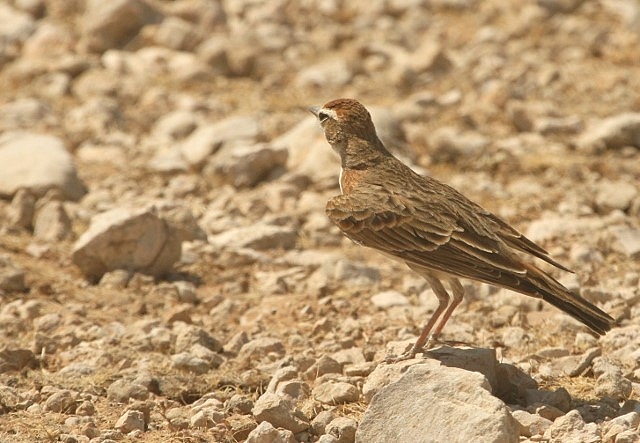
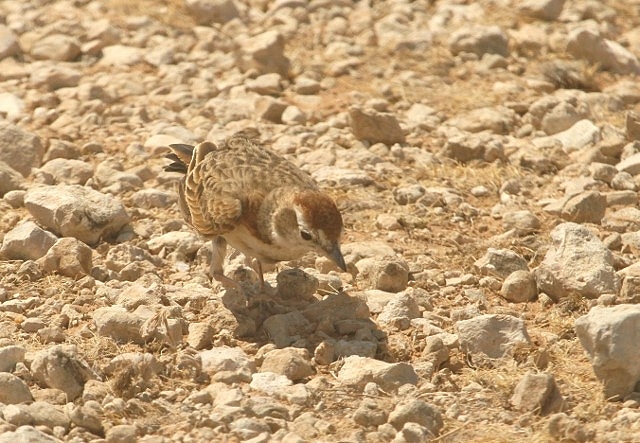
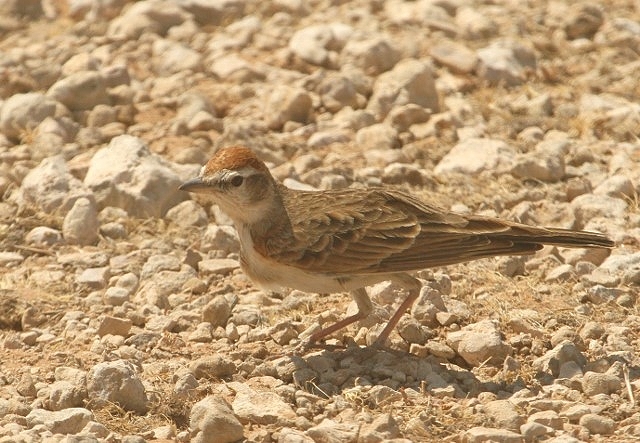
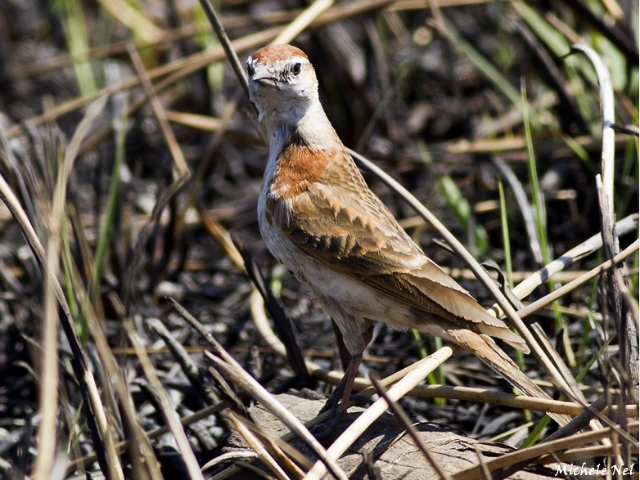 © Michele Nel
© Michele Nel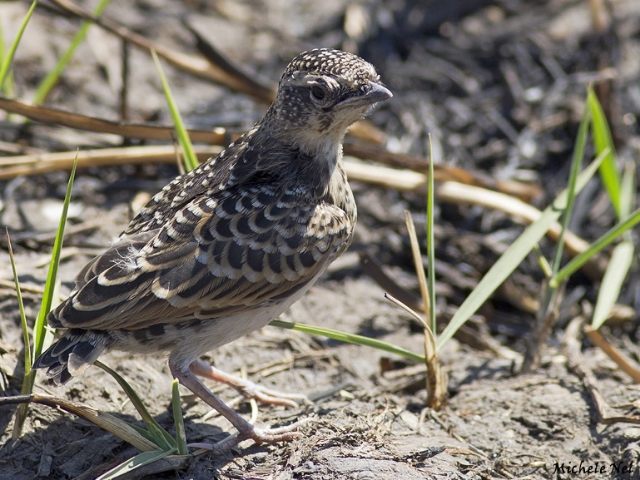 © Michele Nel
© Michele Nel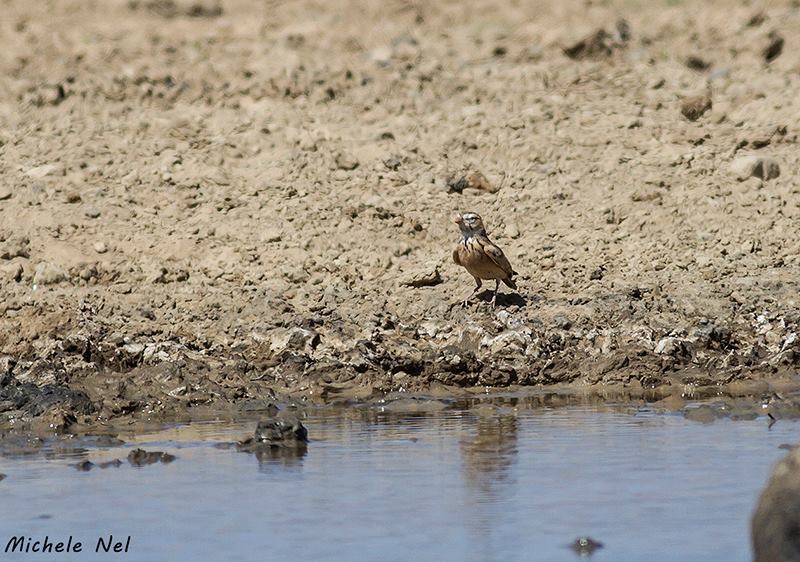 © Michele Nel
© Michele Nel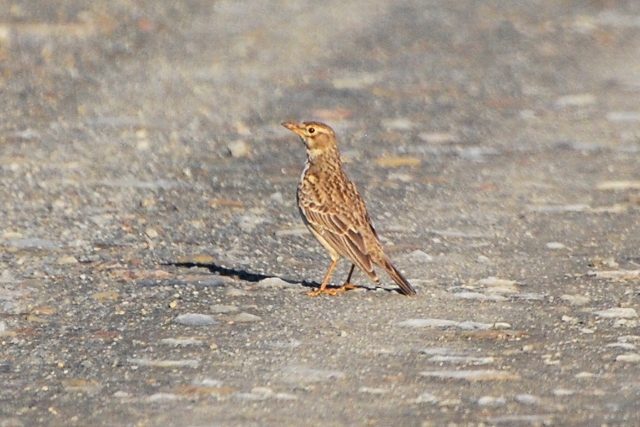
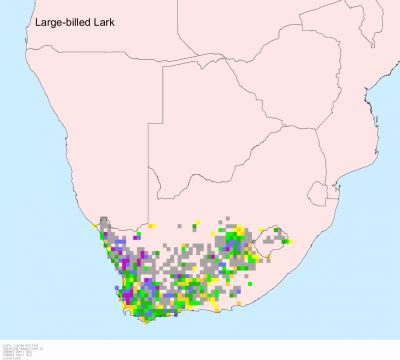
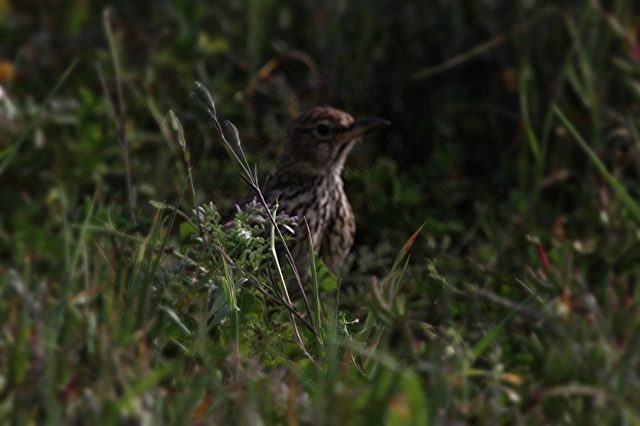 © Tina
© Tina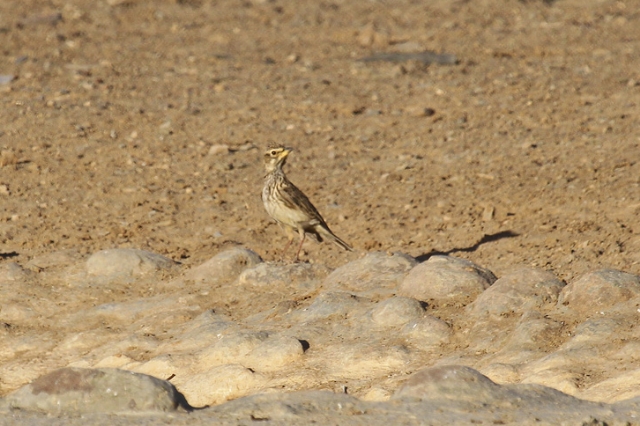 © leachy
© leachy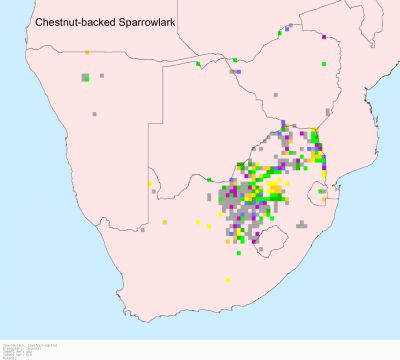
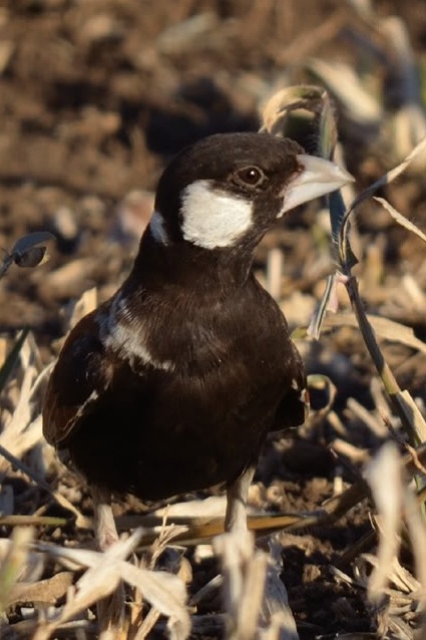 © BluTuna
© BluTuna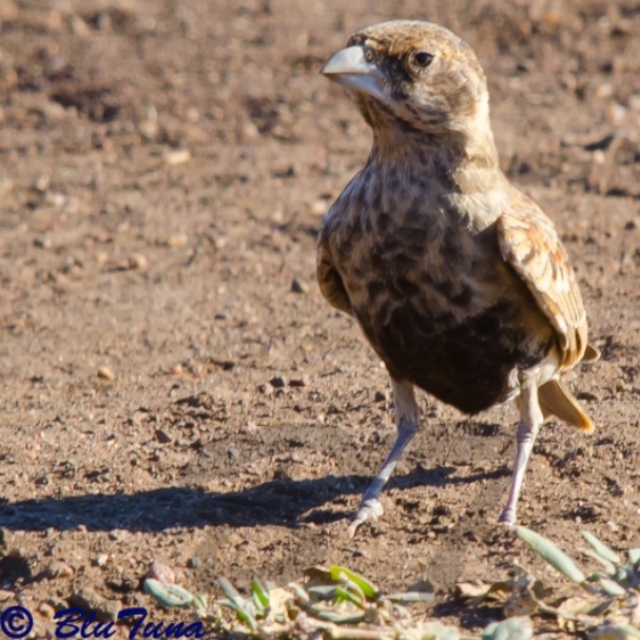 © BluTuna
© BluTuna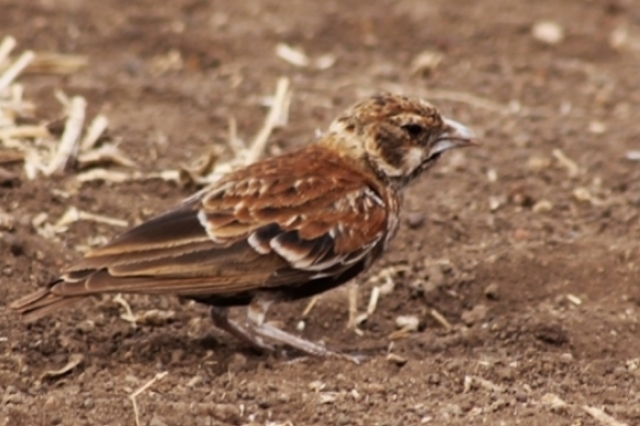 © Amoli
© Amoli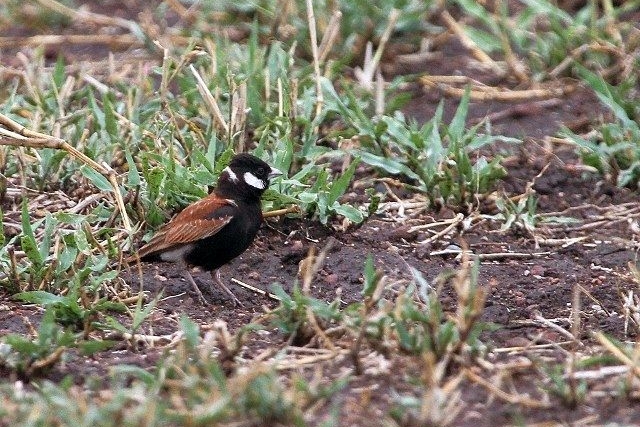 © nan
© nan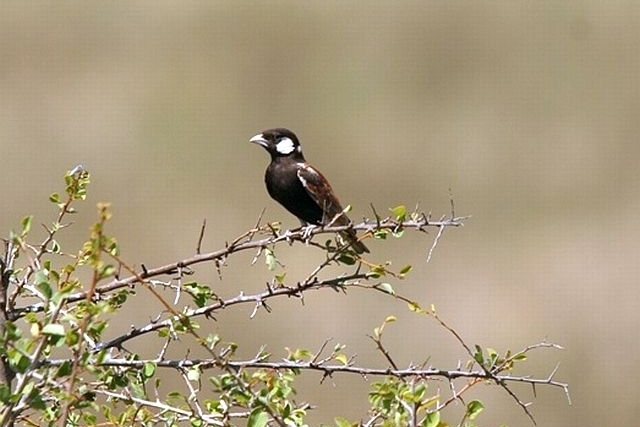 © pooky
© pooky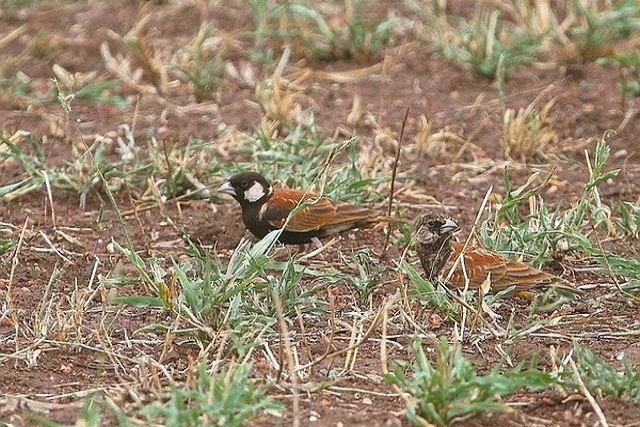 © nan
© nan © nan
© nan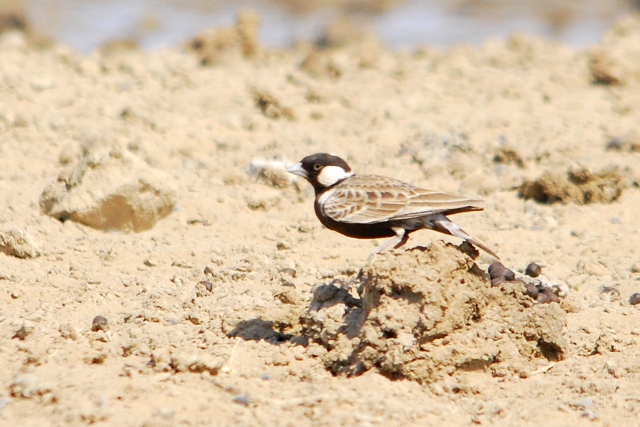 © Mel
© Mel © nan
© nan © nan
© nan © Dewi
© Dewi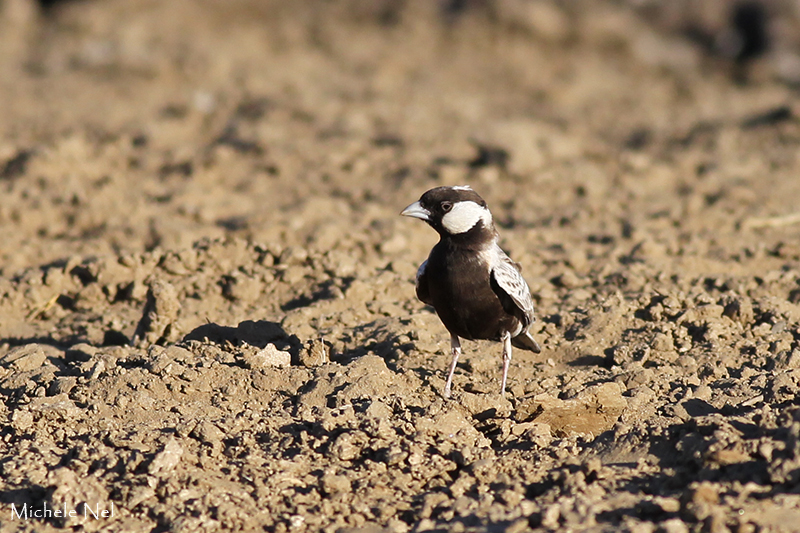 © Michele Nel
© Michele Nel